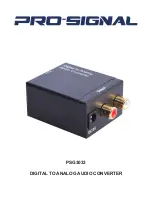
Installation instructions Powador 3200 / 4400 / 5300 / 5500 / 6600_EN
Page 15
2. Relay 33 (DE)
In “Relay 33” mode, the potential-free contact performs this
function in the inverter. If suffi cient PV energy is available for
a period of 30 minutes, the contact is closed. In the simplest
case, this can be indicated in menu level 2 by a visible signal
(e.g. signal light) or an audible signal (e.g. siren).
The potential-free contact can be used to switch larger appli-
ances (e.g. air conditioning units) on and off. This requires an
external power supply and an external load relay. These optional
accessories can also be obtained as an “R33 switch” from your
specialist dealer.
Please consult the operator’s manual for information
on how to operate it.
(B) Connecting the S0 output
The inverter is equipped with an S0 pulse output. Items such as a
large display can be connected to it. The pulse rate is adjustable
(see section 5.8, “Parameter programming”).
(C) Connecting the RS485 interface
In order to connect several Powador units using the RS485
interface, you can use either a commercial patch cable with an
RJ45 plug or a two-core cable that is suited for a fi eld bus. When
the two-core cable is used, terminals RS485 A and RS485 B
are connected to one another.
When a patch cable with an RJ45 plug is used, a CAN bus
connection, which is required for the Sym bus, is established at
the same time. In either case, the connection to the Powador-
proLOG is established using terminals RS485 A and B of the
inverter, in the same manner as the inverters are connected to
each other. Figure 5.10 shows a connection diagram.
Connection diagram for the RS485 interface
Term
ON
ON
A
proLOG
B
Powador
SYM-Bus
CAN
CAN
A
B
RS485
RS485
CAN
RJ45
Powador
RS485
CAN
CAN
Term
A
OFF
RS485
SYM-Bus
RJ45
CAN
OFF
B
RS485
ON
SYM-Bus
RS485
Term
CAN
B
OFF
CAN
RJ45
CAN
Powador
A
Patch-Cable
Figure 5.10:
Connection diagram for RS485 inter-
face and Sym bus using a patch cable
5.4 Interfaces
All interfaces are connected on the board located on the inner
side of the doors.
Figure 5.9:
Interface terminals
(A) Connecting the fault signal relay/
relay 33
The inverter is equipped with a potential-free relay contact
as standard (
Err.
). This contact can be used for two differing
functions.
1.
Fault signal relay
2.
Relay 33 (DE)
Only one of the two functions can be active at any given
moment. You cannot use both functions simultaneously.
1. Fault signal relay
When functioning as a fault signal relay, the potential-free
contact closes as soon as a fault in operation arises. The
contact is designed as a NO contact and marked as “ERR” on
the circuit board.
Maximum contact load
•
DC: 30 V/3 A
•
AC: 250 V/1 A
IMPORTANT
In the event of failure of the feed-in phase (power failure on
the public grid), the relay will not trigger. If this happens,
all LEDs and the display go out. The inverter is shut down
completely. A fault signal cannot be sent.
S e c t i o n 5 ·
I n s t a l l a t i o n a n d S t a r t - U p
!
"#$
%
&
"
















































